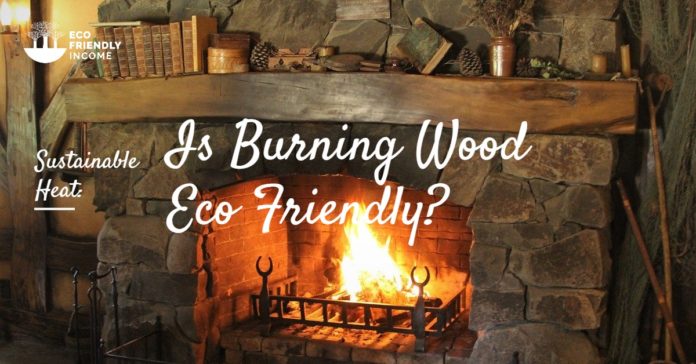I’m from a region in Quebec (Eastern Canada) where wood-burning stoves are very much still a thing. Is it sustainable heat though? Pretty much anyone who can afford a cabin has one. I grew up going to my auntie’s cabin during Christmas and I’ll never forget the toasty warmth and atmosphere a cast iron wood-burning stove sets.
During summer I remember my uncle waking up early in the morning and hearing the chainsaw start up in the distance followed by the cutting sound of the blade against wood. You see during winter in this region, there is a lot of snow and some of the weight will bring down old or weak trees. Once spring comes around and the snow clears, we always take some time to cut up all the fallen trees and stack them up for firewood in the winter. For me this whole process became quite natural, fallen trees were cleared and used for a greater good, why not? I never stopped to think about how this may affect the environment. As I get older and settle, I expect to get a cabin of my own but with my lifestyle, I have to ask myself this question: is it Eco-friendly or not?
A Quick History of the Wood Burning Stove
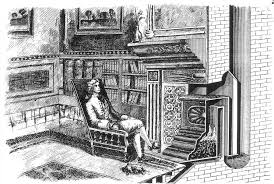
To understand a little bit more about them, why don’t we go back and read up a bit about their history?
Wood burning stoves were first introduced to the world in a humble region called Strasbourg, North-east France. In those times, only the wealthiest of individuals could afford such items as the materials needed to build them weren’t cheap. It wasn’t until the industrial revolution that they commonly started to be used.
What it brought was an adjustable heating source that was fueled by wood, which is easily obtainable. How convenient? Although the first ones built weren’t so efficient, as time went by new models appeared throughout the world, even Benjamin Franklin tried his hand at one but it just didn’t catch on due to it being quite finicky. Inserts were later created to convert the fireplaces into practical stoves, having a section for boiling water and another that can fit a pan for cooking. This utility proved to be quite handy because even today some parts of the world still use it as their main and only way of cooking.
As we can see, wood burning stoves have historically been used for heating, cooking and boiling water, all this required burning wood. How good can that be for the environment? Let’s have a look:
What’s the Environmental Impact of a Wood Burning Stove?
There has been quite a debate about this subject online regarding to the carbon footprint, the question has been: Is burning wood better or worse than burning coal or oil?
Let’s analyze what happens:
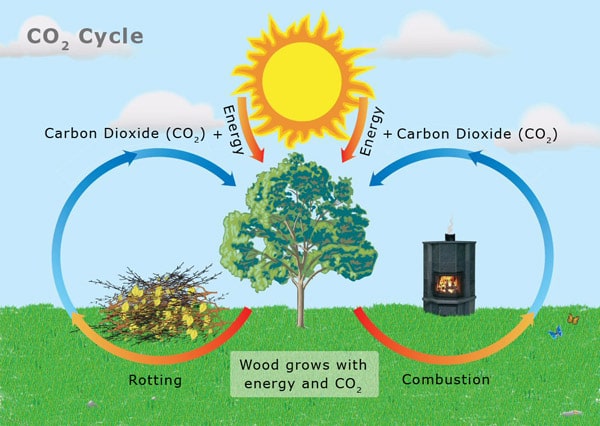
If left untouched, virtually all the carbon in the wood will eventually be released back into the atmosphere by other natural processes.
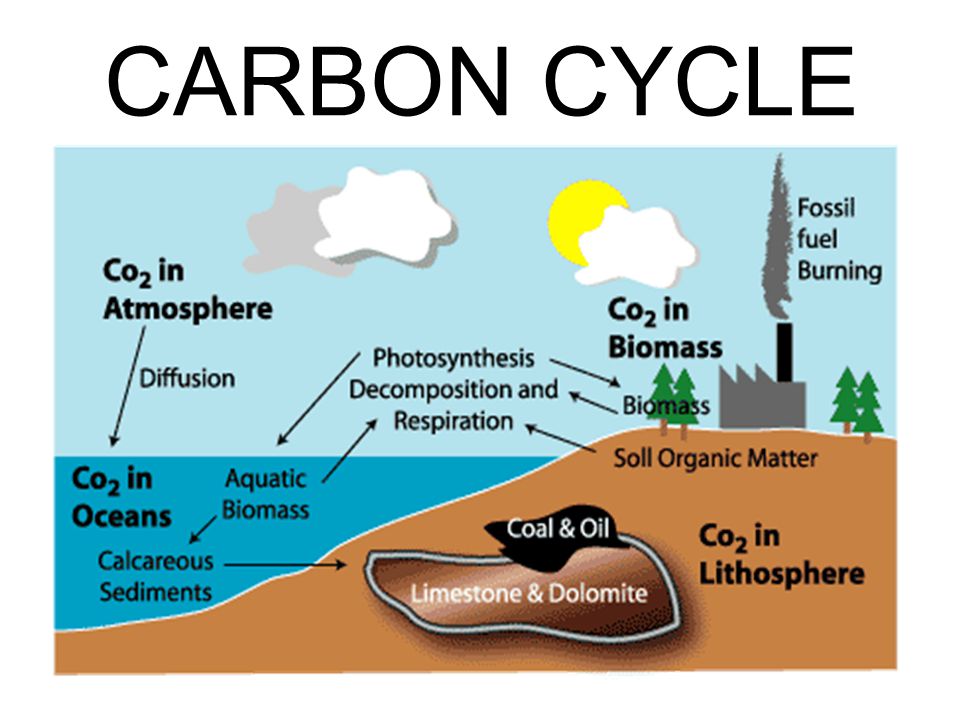
If left untouched, virtually none of the carbon currently sequestered in fossil fuels such as coal will be released back into the atmosphere.
This means that even if we don’t cut trees down, they will eventually fall to the ground and rot, then carbon will be released back into the atmosphere anyway. The cycle is actually pretty quick.
With oil or coal, if left untouched, the carbon stored within will never be released back into the atmosphere because it requires extraction and burning to happen. When it’s burnt, millions of years in a build-up of carbon is released into the atmosphere that should never have been released back.
Oil and coal take a long time to form, it’s terrible for the environment if it all gets released too fast.
Alright, so you’re saying burning wood is better?
Yes, but only as long as the trees are replanted as fast as they are cut down.
The U.S. Forestry Service has recently released that we have reached a point where harvesting wood is now sustainable. Practices within logging companies have been quite strict about replanting and over the years nearly every company has excelled at doing this. The standards now require that they plant more than they harvest.
I have seen this first hand in my recent trip to northern Quebec last August. I saw some areas that had been logged previously and was surprised to learn they had been done a lot more recently that I had estimated. These trees were growing fast! Albeit some of the planting techniques were questionable (trees planted in bundles??).
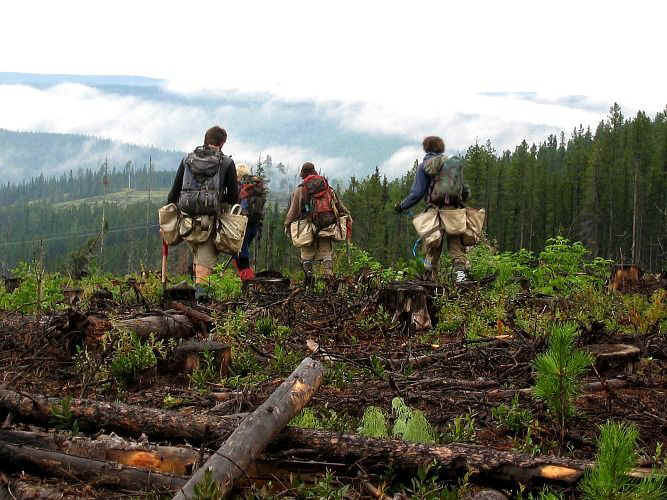
I didn’t think to snap a picture but what I saw was very similar to this (except the trees had grown to the same height as a person).
If cutting trees isn’t a problem, is burning wood bad for the environment?
Now the thing is that if everyone burned wood to heat their homes, a specific problem would arise. There would be a lot of smoke and air pollution. The thing with burning wood the traditional way is that it creates microparticles that do not float all the way up to the atmosphere. Those microparticles tend to linger in the air and create a smog effect not so different from having too many cars on the roads.
Manufacturers of wood-burning stoves are aware of this and actually have been working on Eco-friendly alternatives that reduce and trap the emission of those microparticles. They call them contemporary wood burning stoves.
These stoves emit a very small amount of smoke and burn the wood quite efficiently. How they did this was by allowing the wood to burn at higher temperatures, you see those microparticles released in the air were caused by the wood not being entirely burnt. The residue would get pushed up from the hot air and get carried away by the wind.
Compared to our old-school counterparts, contemporary EPA certified stoves burn with increased efficiency of nearly 80%! It is said that for every 40 grams of smoke emitted per hour by traditional stoves, 5 grams of smoke is emitted by the newer alternatives. I’d say that’s a very nice upgrade.
Types of modern wood stoves
With this new technology and reduction in CO2 emissions, the product has branched off into different designs with each their own advantages.
Catalytic Wood Stoves
The high-end version with a slightly more complicated burning process. It’s your choice if you’re looking to heat your home majorly with the stove. These are the advantages you can get from catalytic stoves:
- Higher Efficiency
- A slower burn
- Swing out ash pan, top loading feature and thermostatic control
- Adjustable vent
Non Catalytic Stoves
The mid-tier version is easily installed and operates in a simple manner. It’s your choice if you’re looking to use it to set an atmosphere while having a lower heat output for your home. These are the advantages you can get from non-catalytic stoves:
- Lower upfront cost
- Beautiful flame
- Easy to Operate
- Less Maintenance
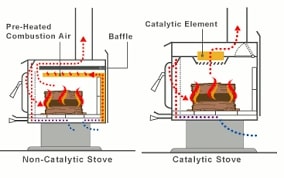
Pellet Stoves
A pellet stove uses carbon neutral eco-friendly wood pellets that’s a great choice for sustainable heating. These are the advantages you can get from a pellet stove:
- Automatic Ignition
- Programmable
- High Efficiency
- Autonomy
- Convenient Fuel
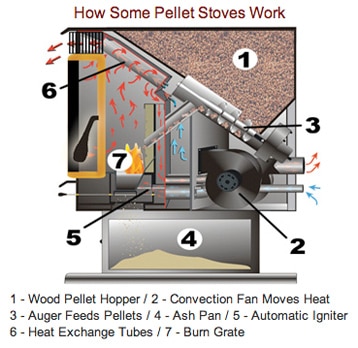
Gas Fireplace Insert
Gas Fireplaces usually come integrated into your home and provide a great focal point in your living room. Here are the advantages you can get from a gas fireplace insert:
- Safe
- Clean
- Easy to Maintain
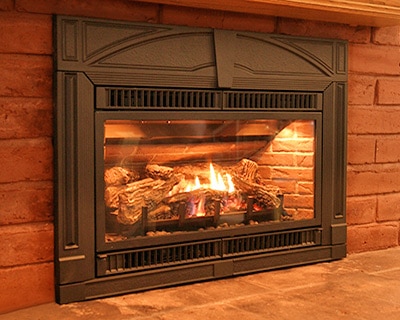
Take Away
Generally, with any of these stoves, there are some key points you want to look at before making your purchase. Ask yourself the following questions regarding the stove you want to buy:
- What size of stove do I need for my home?
- What’s the rating on my stove, is it approved and certified as eco-friendly?
- What options does my stove give me?
- Does my stove have a proper filter?
With these questions in mind, you’re likely to make the right choice when buying your stove.
Where can I get a contemporary wood burning stove?
To help you look at some examples of contemporary wood burning stoves I’ve assembled a small list of companies you can check out that support Eco-friendly living. I’m keeping it short because if you do eventually buy a wood stove, chances are you’ll look in your area but this will give you a good idea what to look for. Anything that ranges from small wood-burning stoves, wood burners, large luxurious indoor wood stoves to wood burning stove inserts.

Stovax uses the latest technology to ensure you’re burning wood at maximum efficiency while having a stylish and cozy fireplace. Their website is actually very nice and I enjoy the layout. You can check out the types of fireplaces you can get in the future with the wood stoves for sale that they have.

Marsh’s Stoves and Fireplaces is a family owned business in the Greater Toronto Area with a pretty active blog where you can get even more information about your potential product. You can even finance one if that’s what’s best for you. They also offer installation making the process pretty easy!

Contura is all about efficiency for your stove, they make sure their stoves are carbon neutral. They are the leading manufacturer of Eco-friendly stoves located in Europe.
Where can I source my wood?
Wood being so readily available means you can actually get some for free quite easily if you look around.
1. Ask companies for their scrap wood
For example, my brother used to get the excess wood from the trailer building company he worked for. They were very sturdy pieces of wood that burned quite nicely, he got them for free!
2. Recycling Centers
Check your local recycling center, they might have extra wood you can pick up and take home.
3. Kijiji or social media
Look at offers online for free wood to be picked up, there are ads like this regularly posted.
4. Buy the wood
Wood is actually 1/3 cheaper than natural gas, electricity or oil. You can buy it at stores or acreages outside of town. Where I’m from it’s easy to find people selling them on the side of the road when driving between cities.
Are wood burning stoves worth it?
The answer is yes! Certified wood-burning stoves these days are actually pretty carbon neutral. Along with the toasty atmosphere and good price, you’ll get to enjoy (ever read a book by a fireplace? It’s complete bliss) you will also know that you’re contributing to helping the planet. Check out if your city allows wood burning stoves in your home and if it does, maybe you should put it on your wish list?

